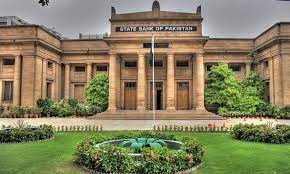The State Bank of Pakistan (SBP) has stated that overall risks to financial stability appear manageable due to anticipated moderation of macroeconomic stress and the strong buffers and risk management capabilities of the banking sector. In its Financial Stability Review (FSR) for CY2023, the SBP emphasized that the latest stress test results indicate the banking sector has adequate resilience to withstand severe but plausible macro-financial shocks in the medium term.
The SBP underscored the critical importance of policy continuity on structural reforms for sustained improvement in the country’s macroeconomic fundamentals and the resilience and performance of the financial sector. The Financial Stability Review is prepared and published in accordance with the requirements of sub-section (3) of section 39 of the State Bank of Pakistan Act, 1956, as amended in January 2022.
The Review presents the performance and risk assessment of various segments of the financial sector, including banks, microfinance banks (MFBs), non-bank financial institutions (NBFIs), insurance, financial markets, and financial market infrastructures (FMIs). It also evaluates the financial soundness of major users of credit and financial services, such as the non-financial corporate sector.
The Review highlights that the macroeconomic environment remained challenging amid rising inflation, weak foreign exchange inflows, pressures on the external account and local currency, and low business confidence, particularly in the first half of CY2023. However, policy measures and regulatory interventions, coupled with securing a nine-month Stand-by Agreement (SBA) from the International Monetary Fund (IMF), helped improve macroeconomic conditions in the second half of CY2023.
Inflation began to decline, economic growth recovered, and the exchange rate stabilized towards the end of the year. Against this backdrop, the financial sector exhibited strong growth and performance, maintaining its financial soundness and operational resilience. The asset base of the financial sector expanded by 27%, primarily driven by the banking sector.
Despite high volatility in financial markets, the banking sector demonstrated resilience and grew by 29.5% during the review period. The growth in assets was mainly driven by investments in government securities, while private sector advances contracted due to stressed macro-financial conditions. The expansion of banks’ balance sheets was primarily funded by deposits, which posted a 20-year high growth in a high-return environment. The credit risk did not present a serious concern, as the non-performing loans (NPLs) to loans ratio marginally increased to 7.6% by end of December 2023, from 7.3% in December 2022, with the provisioning coverage improving to 92.7%.
The earnings of the banking sector remained healthy, supported by high rates and expansion in earning assets, which bolstered the solvency position. Consequently, the capital adequacy ratio (CAR) improved to 19.7% by the end of December 2023, remaining well above the minimum regulatory requirement. The Islamic banking institutions continued to maintain their growth momentum in CY2023, with strong earnings and comfortable asset quality indicators further enhancing their resilience. However, the microfinance banks (MFBs) sector continued to experience stress in CY2023.
The Review reveals that the non-bank financial sector also showed healthy performance during CY2023. The asset base of Development Finance Institutions (DFIs) and Non-Bank Financial Institutions (NBFIs) observed strong expansion. Despite the slowdown in economic activity, the insurance sector witnessed growth in assets and gross premium.
The overall position of the non-financial corporate sector was encouraging, with solvency indicators and repayment capacity remaining satisfactory. Notably, large borrowers in the banking sector exhibited stable repayment capacity, with no significant delinquencies reported during the year under review.
The FSR also highlights the operational resilience of Financial Market Infrastructures (FMIs) during CY2023. E-banking transactions continued to drive growth in retail payments. Importantly, the SBP moved to implement the third phase of Raast’s person-to-merchant (P2M) mode to facilitate digital payment acceptance for merchants and businesses.
In view of the rapidly evolving dynamics of risks to financial stability, the SBP continues to proactively strengthen its regulatory and supervisory regime. This proactive approach ensures that the financial sector remains robust and capable of withstanding potential shocks.




